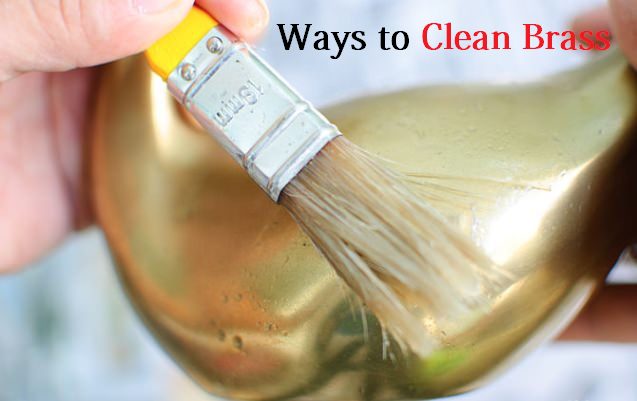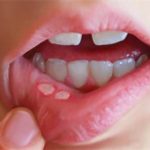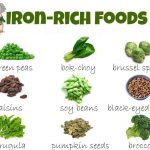Brass is an alloy of copper, zinc and sometimes other metals. It is a metal that has been used by ancient civilizations and modern-day people alike due to its durability, malleability, and elegance. But there is a problem in it, it accumulates dirt, grease oils and may tarnish over time. Brass brings a warm, burnished glow to the household items ranging from switch plates, door knockers and lamp to bathroom fixtures, furniture, and even kitchen utensils. It is a strong corrosion resistant and relatively inexpensive alloy. There is a various way to clean brass that simply requires common household product combined with careful application. You can also use a commercial cleaner, depending on the amount of tarnish covering your brass piece.

Ways to Clean Brass:
1.) Determine if the Piece is Actually a Brass
Before you set to clean your brass, determine if the piece you want to clean is actually a brass. You can find that by using a magnet. You need to hold a household magnet near the piece of brass and see it is magnetically attracted to the brass.
- If the magnet doesn’t magnetically cling to the object, then it is a brass. But if the magnet does magnetically cling to the object then understood that piece is real an iron or steel, covering with a brass coating.
2.) Determine if the piece you want to clean should be cleaned.
Some object of brass are not meant to be bright, therefore any effort to clean that piece of brass might actually ruin the object.
- Patina is the turquoise coloring that forms on copper and brass which add a unique look to a piece of brass and cannot be bright.
- Patina is used to evaluate many aspects of a piece of brass. For instance, it can be used to determine the age of a piece of brass, its potential value, and its current condition. Any removal or alteration of patina on a brass piece can significantly affect its worth.
3.) Determine if the Brass Piece is Lacquered
On a modern piece of brass, an outer coating of lacquer works as a layer of protection against oxidation. But in older antique pieces of brass typically don’t have a lacquered coating. You can find if a brass piece is lacquered by looking at its surface. Lacquered piece have a clear finish of covering the entire piece. Brass covered with lacquer will only tarnish if there will be a crack in the lacquer coating.
- Lacquered brass is easy to clean and all you need to make a mixture of soap and water. You might want to consider removing the lacquer if the tarnish has formed under the lacquer finish.
- If you still face the trouble finding out that this piece has lacquered finish. Remember that lacquered brass has more yellow shading.
4.) Clean your lacquered Brass Piece
The first you need to do to clean brass is to regularly dust them using a soft rag. After dusting your lacquered piece of brass, dip a soft cotton cloth into a mixture of a mild solution of detergent and lukewarm water. Wring out the cloth and gently wipe the brass surface to clean. Once you have cleaned the surface, take the wrung out the cloth and dip it into the clean water to remove any remaining soap, then dry the piece of brass thoroughly.
- If you are trying to remove tarnish that has to accumulate, so you will first need to remove the layer of lacquer first. you can remove the layer of lacquered using hot water
5.) Commercial cleaner to Clean Brass
There are many eco-friendly brass cleaners that can remove the tarnish and restore shine to the brass piece without even damaging the surface.
- Sometimes brass cleaner has an abrasive element in their formula, so make sure to not damage fragile etching on your brass piece.
- Stay away from the muriatic acid. It will not properly clean brass but leave behind permanent stains.
- Undiluted ammonia and white vinegar can be highly effective in cleaning antique brass. Let soak the piece of brass for an hour in either ammonia or vinegar. Both products are natural cleaning agents and can give the brass a lasting, shiny finish.
6.) Baking soda to Clean Brass
In a not aluminum pot boil a water and add couple teaspoons of each washing soda and baking soda. But do this only if your brass is lacquered and you need to remove it. very often the lacquer on brass wears off or becomes cracked. When this will happen the brass is exposed to air and becomes oxidized and this tarnish is born. There is two methods of boiling your brass. The first method is to boil the water until the lacquer comes off or other is submerge the brass object in the boiling water for a few minutes an then remove it carefully. When the brass heat ups it expands and when it get cool, it shrink again but the layer of lacquer is not. So you will be able to peel the lacquer away in chunks.
7.) Alternative Brass Cleaner
You can make you own brass cleaner at home or you can use commercial brass cleaner. You will need some of these another natural ingredient to clean brass.
- Ketchup – use a soft cloth to clean brass piece with ketchup. Let the ketchup sit on the brass surface for around 10 minutes, and then wipe the kitchen off with a clean damp cloth. Then dry the brass piece thoroughly.
- White vinegar and salt. Cover the brass with white vinegar and then sprinkle some salt over the vinegar. Wet a clean cloth with a little bit of vinegar and gently wipe down the brass. Dry with a clean cloth.
8.) Polish to Clean Brass
Make sure the brass is clean of all surface dirt and dust before you begin to polish them. There many kinds of commercial brass polishes, but you can also make your own at home with lemon. Cut a half lemon and squeeze all the juice from half the lemon into a small bowl. You can also use baking soda or table salt. You can use any type of baking soda to make a paste. This will require about a tablespoon of baking soda or salt.apply the paste using a soft cloth.
- Make sure to apply the paste going with the grain of the metal. If not you could make a tiny little scratch on the brass surface.
- Make sure to don’t rub the paste too harshly into the piece of brass. The abrasive salt and baking soda will gently remove the tarnish.
- Use a soft bristle brush to clean the nooks and hard clean the area which is hard to reach.
9.) Remove all the Tarnish to Clean Brass
You have to make sure that you have removed all the tarnish and get your brass good and dry. Once you will complete the polishing procedure rinse away al the lemon flavored brass polish. Take a good look at your work. If you find that you have mussed some spots, just go ahead and hit them with some of your leftover brass cleaners. Make sure to risen again. When you are certain you are done get a clean cotton cloth and dry the brass as quickly as you can because brass retains the water spots something terrible. Using a new and totally dry cotton towel, or yet better, a microfiber cloth clean brass till it shines all purdy like.
10.) Protect your Brass from Future Tarnish
After you have finished your brass cleaning you need to protect it from future tarnishing by applying a lacquered finish. You can apply the lacquer using either a cotton ball or a paint brush. Consult the instruction on the lacquer container to see the suggestion of manufacturer.
- However you decide to apply the lacquer, make sure to only put a thin layer. Watch for any dripping lacquer because the dripping can dry. Leave you brass piece covered in drip streaks.
- Allow the brass piece to dry thoroughly before touching. When the lacquer will dry, wipe the brass with a clean cloth to give it to some shine.















